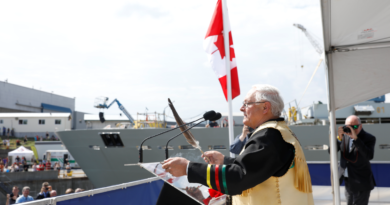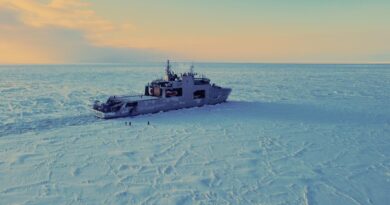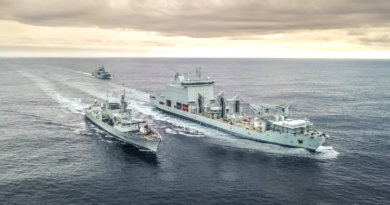Canada in Extremis – Rebalancing the CAF and rebuilding the Canadian Navy
by ‘Dusty’ Miller
This latest Naval Association of Canada/University of Calgary paper of May 2024 is a must read for government officials and Parliamentarians as well as serving and retired military personnel and the general public interested in keeping their democratic country safe.
The paper lays out in no uncertain terms the requirements to defend our way of life and culture and recommends actions for government to take to defend our country in cooperation with our allies.
It makes five recommendations, which I summarize:
- put a long term budget in place to meet what a war footing requires
- place a procurement system to shorten the acquisition process
- better integrate our Arctic approaches for Defence
- invest in recruiting and retention to grow the Navy
- reshape the present fleet to reconstitute and modernize combat capabilities
What I found most interesting was the chapter concerning the future fleet requirements> It lays out what Canada needs and requires for a navy. The will to get there is acknowledged as the government’s prerogative. Nevertheless, the chapter is a thoughtful and logical blueprint for the future fleet requirements. It starts with a candid assessment of the present Halifax-class frigates, replenishment vessel, Victoria-class submarines, Kingston-class patrol vessels, Arctic and Offshore Patrol Vessels and naval air assets.
It offers numerous suggestions for a much larger fleet and recommends a much shorter timeframe for the build of the Canadian Surface Combatant project ships. The projected 33 years introduction of the class needs to be halved. We can all recognize you go to war with what you have or what you can get hold of without waiting 33 years! You can conclude from this chapter that new combat systems need to be placed in the aging fleet, as was done before the Gulf War of 1990/91.
The paper lays out what the Royal Canadian Navy needs:
- Each coastal command needs to be able to deploy a high readiness task group of three to four major combatants accompanied by a replenishment ship. This means 12 to 16 major combatants per coast for a total of 24-32 ships.
- Each coast needs two replenishment ships for a total of four.
- Using a four-to-one ratio, deployment criteria for submarines means eight submarines are required per coast to keep two on station and have an international back up.
- Niche warfare capabilities to contribute to our allies means mine warfare, drone weapon delivery, etc., vessels post-Kingston-class and for training.
So what hope is there for such a fleet? Maybe off-the-shelf buys, loans from allies, etc., and a willingness to get to the 2% GDP NATO defence requirement could help. The fact that the paper lays out the logic and insinuates anything less will mean less in meeting the nation’s defence in the future. The paper’s final statements are gripping: “Defence can no longer be seen as an expensive luxury or a vehicle for industrial or employment policy. The Defence of Canada and its Allies is an existential requirement and must be treated as such.”
So guess what? I fully endorse and support this paper and see it as a necessity for those in the Navy and those in government to seriously look at making as much of it as possible happen.
The army and the RCAF need, to my mind, to produce similar strategic assessments for their future requirements.
Well done to NAC and University of Calgary workshop in producing a first class paper and blueprint for Canada’s future fleet.
Duncan “Dusty” Miller
Vice-Admiral RCN (ret’d)/ Honorary Colonel RCAF (ret’d)
CMM, MSC, CD3
Former NATO A/Deputy Supreme Allied Commander Atlantic
Former Commander Maritime Forces Atlantic and Joint Force Commander Atlantic




